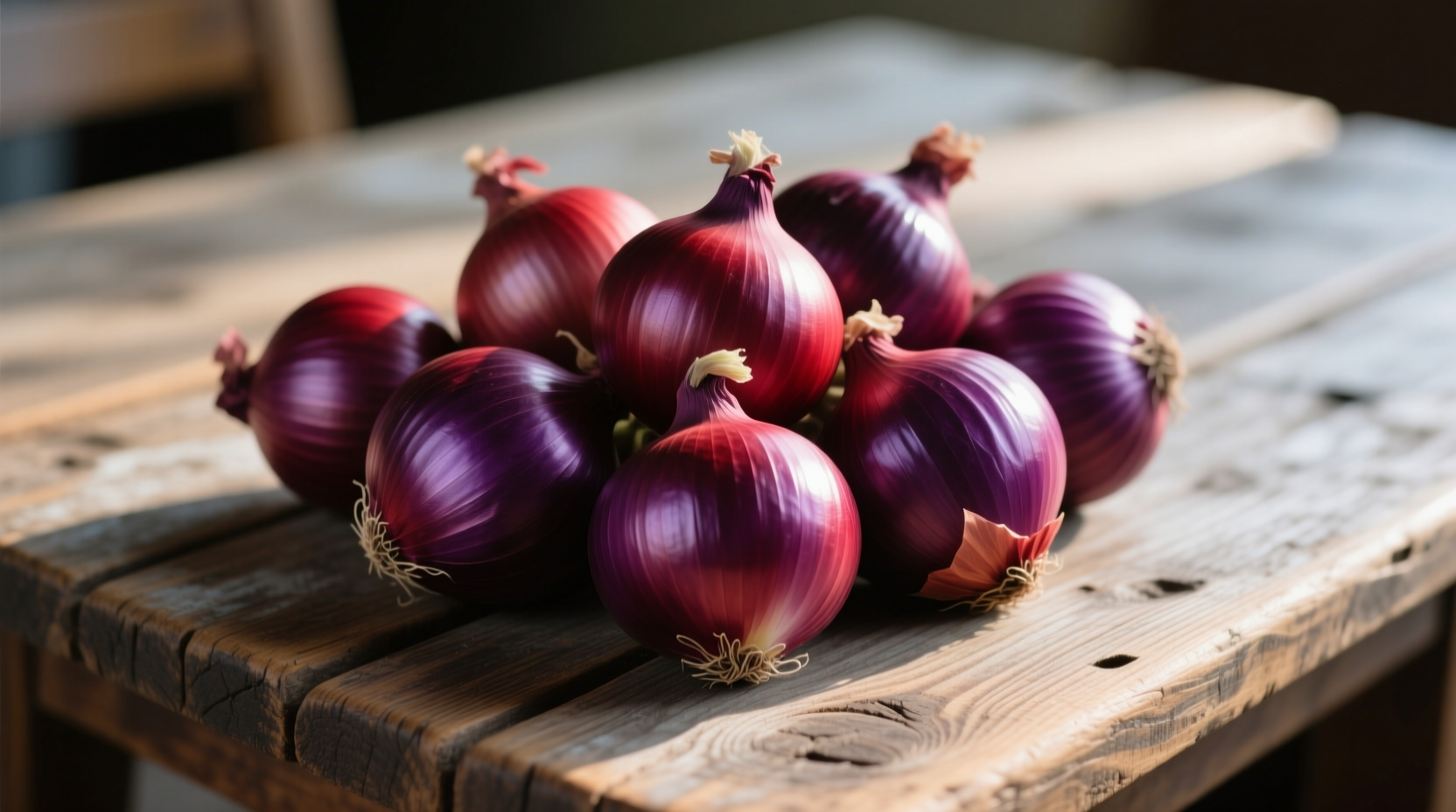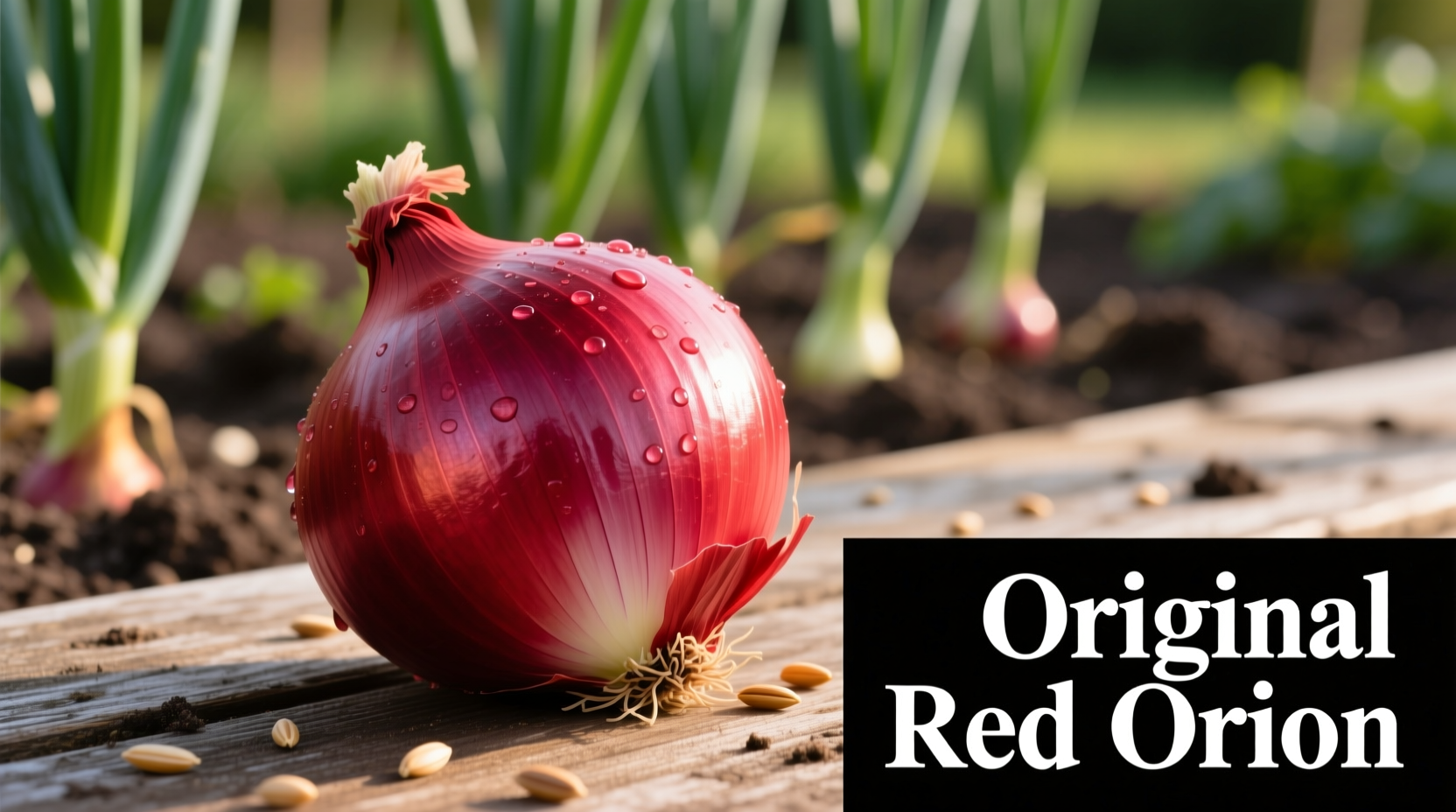If you're searching for "original red onion," you're likely wondering whether this refers to a specific heirloom variety or if it's just marketing terminology. The truth is, there's no officially recognized "original red onion" variety. Instead, the term typically describes authentic, non-hybrid red onion varieties like Tropea, Wethersfield, or Red Torpedo that have been cultivated for generations without significant genetic modification. These true red onions offer superior flavor complexity, deeper color, and better storage qualities compared to modern hybrid varieties.
When you reach for a red onion at the grocery store, you're probably grabbing a hybrid variety bred for uniform appearance and shelf life rather than flavor. But what if you want the authentic taste that chefs and food historians rave about? Understanding what makes a red onion "original" can transform your cooking and help you select ingredients with genuine culinary heritage.
Demystifying the "Original Red Onion" Terminology
The phrase "original red onion" doesn't refer to a single, specific cultivar recognized by agricultural authorities. Instead, it's a descriptive term used by growers and culinary professionals to distinguish traditional, non-hybrid red onion varieties from modern commercial hybrids. These authentic varieties have been passed down through generations with minimal genetic alteration.
According to the USDA Plant Genetic Resources Conservation Unit, there are over 60 documented heirloom red onion varieties still in cultivation today, each with distinct flavor profiles and growing requirements. The confusion arises because many commercial growers market standard hybrid red onions as "original" or "authentic" to capitalize on the growing interest in heritage produce.
Authentic Red Onion Varieties Worth Knowing
True "original" red onions share several characteristics: deeper purple-red color that extends through multiple layers, sharper initial bite that mellows beautifully when cooked, and a complex flavor profile with subtle sweet and earthy notes. Here's how some authentic varieties compare:
| Variety | Origin | Flavor Profile | Best Culinary Uses |
|---|---|---|---|
| Tropea | Calabria, Italy | Exceptionally sweet with mild heat | Raw applications, salads, quick pickling |
| Wethersfield | New England, USA (1800s) | Classic onion flavor with balanced heat | Cooking, roasting, French onion soup |
| Red Torpedo | California, USA | Strong initial bite, complex finish | Salsas, grilling, caramelizing |
| Candy | Modern hybrid | Mild, one-dimensional sweetness | General purpose, but lacks depth |
How Red Onions Evolved: A Brief Timeline
Understanding the historical context helps clarify what makes an "original" red onion. The cultivation timeline reveals how modern hybrids differ from traditional varieties:
- 5000 BCE: Earliest evidence of onion cultivation in Bronze Age Pakistan, with red varieties emerging in Mediterranean regions
- 1500s: Spanish explorers introduce red onions to the Americas, where they adapt to new climates
- 1800s: Distinct regional varieties like Wethersfield red onion become established in New England
- Early 1900s: Seed catalogs list over 30 distinct red onion varieties with regional characteristics
- 1950s-1970s: Commercial breeding prioritizes uniform appearance and shipping durability over flavor
- Today: Less than 10% of red onions sold in supermarkets are true heirloom varieties
This historical shift explains why finding authentic "original" red onions requires more careful selection than simply grabbing the first red onion you see at the store.
When "Original" Matters: Practical Context Boundaries
Not every cooking application requires seeking out authentic heirloom red onions. Understanding when the variety truly impacts your dish helps make informed choices:
When authentic varieties make a significant difference:
- Raw applications where onion flavor dominates (salsas, salads, garnishes)
- Caramelizing, where complex sugars develop differently in heirloom varieties
- Pickling, where the onion's natural sugar content affects vinegar absorption
- When creating dishes where onion is the star ingredient (French onion soup, onion tart)
When standard hybrids suffice:
- As background flavor in long-cooked stews or sauces
- When onions will be heavily processed or pureed
- In recipes where other strong flavors dominate
- For general cooking when heirloom varieties aren't available
How to Identify Genuine Red Onions at Market
Finding authentic "original" red onions requires knowing what to look for. Here are practical identification tips that go beyond just color:
- Check the root end: Authentic varieties often show more pronounced root structure with visible growth rings
- Examine the skin: True heirloom red onions typically have thinner, more papery skin that's difficult to peel in large sections
- Look for irregular shapes: Commercial hybrids are bred for uniform roundness; authentic varieties often have slight irregularities
- Ask about seed sources: Farmers market vendors who grow authentic varieties can usually tell you the specific cultivar and seed source
- Smell test: Gently scratch the outer skin - authentic red onions release a more complex, less harsh aroma

Maximizing Flavor from Authentic Red Onions
Once you've found genuine heirloom red onions, proper handling unlocks their superior flavor profile. Unlike commercial hybrids bred for consistent performance, authentic varieties respond differently to various preparation techniques:
Cutting techniques matter: Cut heirloom red onions crosswise rather than pole-to-pole to minimize cell damage and reduce harsh sulfur compounds. The traditional pole-to-pole method used for commercial onions can make authentic varieties overly pungent.
Soaking secrets: For raw applications, soak sliced authentic red onions in ice water with a splash of vinegar for 15-20 minutes. This preserves their vibrant color while mellowing the initial bite without washing away flavor compounds.
Cooking considerations: When caramelizing authentic red onions, start with lower heat (300°F/150°C) and cook slowly for 45-60 minutes. Their higher sugar content burns more easily than commercial hybrids but develops richer, more complex flavors when cooked properly.
Storage Tips for Long-Lasting Flavor
Proper storage maintains the distinctive qualities that make authentic red onions special. Unlike commercial hybrids bred for extended shelf life, heirloom varieties require more careful handling:
- Store in a cool, dark place with good air circulation (mesh bags work better than plastic)
- Maintain humidity around 65-70% - too dry causes shriveling, too moist promotes mold
- Never refrigerate whole onions (refrigeration promotes sprouting in authentic varieties)
- Use within 2-3 months for peak flavor (authentic varieties don't store as long as hybrids)
- If you must refrigerate cut onions, store in an airtight container with a paper towel to absorb moisture
According to research from University of Minnesota Extension, authentic red onion varieties lose their distinctive flavor complexity more rapidly than commercial hybrids when improperly stored, making proper storage techniques essential for preserving their unique qualities.











 浙公网安备
33010002000092号
浙公网安备
33010002000092号 浙B2-20120091-4
浙B2-20120091-4